How to Create a Perfect Lawn
The lawn is certainly the feature of any decent garden. A lawn gives space for the kids to play or kick about, for family pets to enjoy, and for you to sunbathe, relax, and entertain in the summer. A healthy, lush green grass will bring your outside area to life, but how exactly do you achieve this? From designing your lawn to maintaining or fixing it, we’ve put together the definitive lawn guide. Whether you’re an experienced gardening enthusiast or a gardening rookie, join us at Balaji Nursery for great ideas and guidance, and enjoy a gorgeous lawn all year round with our 10 steps to success.
Step 1: Consider the arrangement of your garden
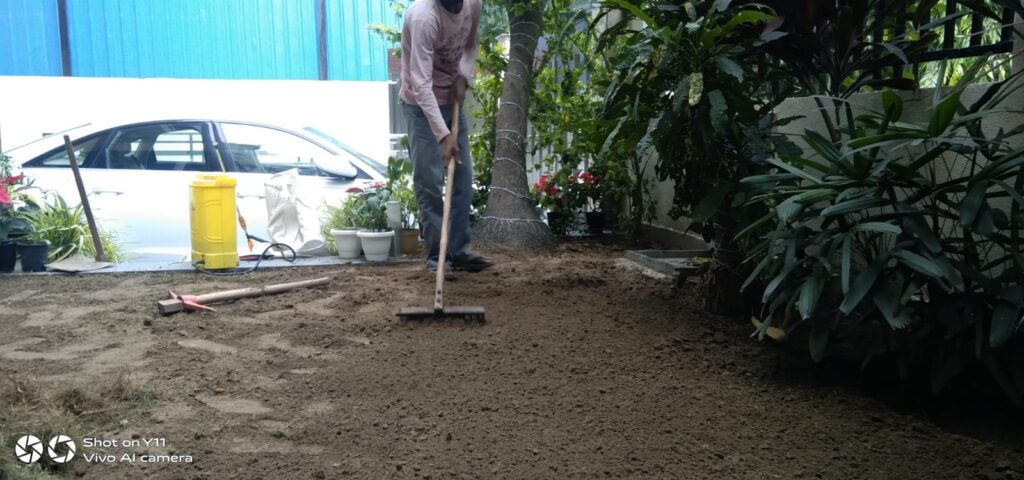 Before you start working on your grass, you need to take a thorough look at the arrangement of your yard and what will be feasible for you. Begin by looking at the size and shape of your garden. Which places do you prefer to utilize the most, and which ones capture the most sun? You want your garden layout to utilize the sunshine, so think carefully about where to place features, plants, or trees and where to lay the lawn. Next, evaluate who uses your garden and what you really use your garden for. If you have children or pets, a full lawn is great for offering lots of space to run and play. If you organize regular BBQs or garden parties, a patio area and lawn combo, with room to entertain, will be great.
Before you start working on your grass, you need to take a thorough look at the arrangement of your yard and what will be feasible for you. Begin by looking at the size and shape of your garden. Which places do you prefer to utilize the most, and which ones capture the most sun? You want your garden layout to utilize the sunshine, so think carefully about where to place features, plants, or trees and where to lay the lawn. Next, evaluate who uses your garden and what you really use your garden for. If you have children or pets, a full lawn is great for offering lots of space to run and play. If you organize regular BBQs or garden parties, a patio area and lawn combo, with room to entertain, will be great.
Step 2: Decide which is suitable for your garden—grass, turf, or seed?
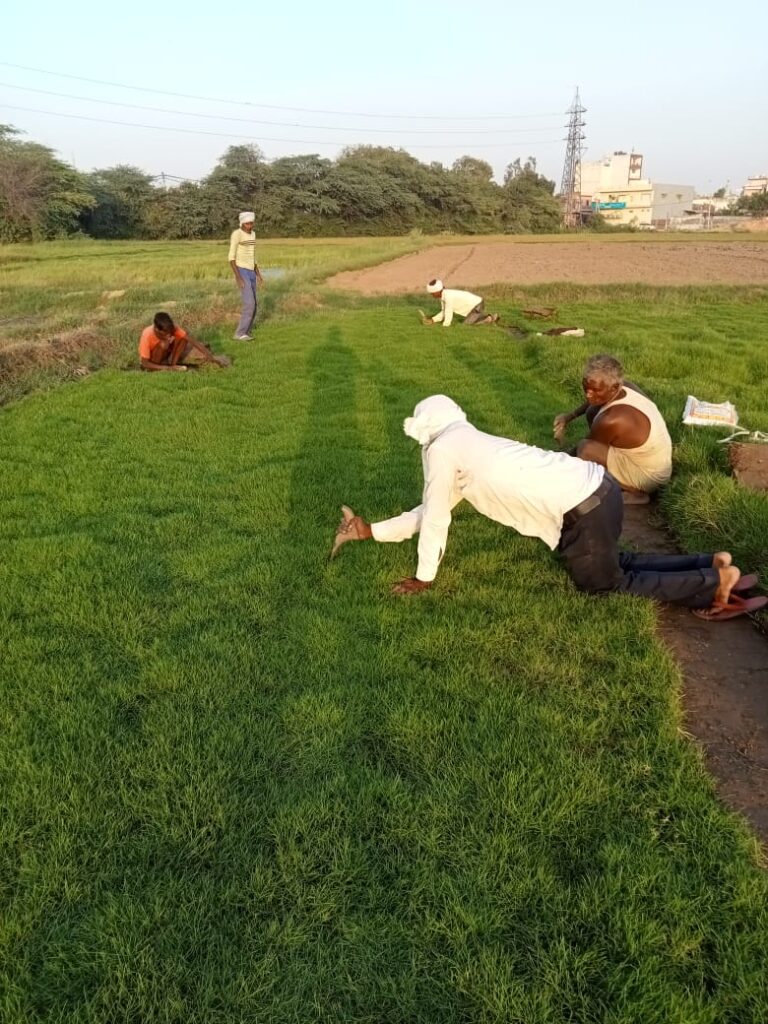
Once it comes to the initial development of your lawn, there are two alternatives: turf or seed. There are pros to both. grass seed creates a natural-looking grass, is easy to utilize in small areas, and is by far the most cost-effective of the two alternatives. A grass turf, on the other hand, delivers a quick result and will need less care in the first couple of months.
Step 3: Prepare your yard well
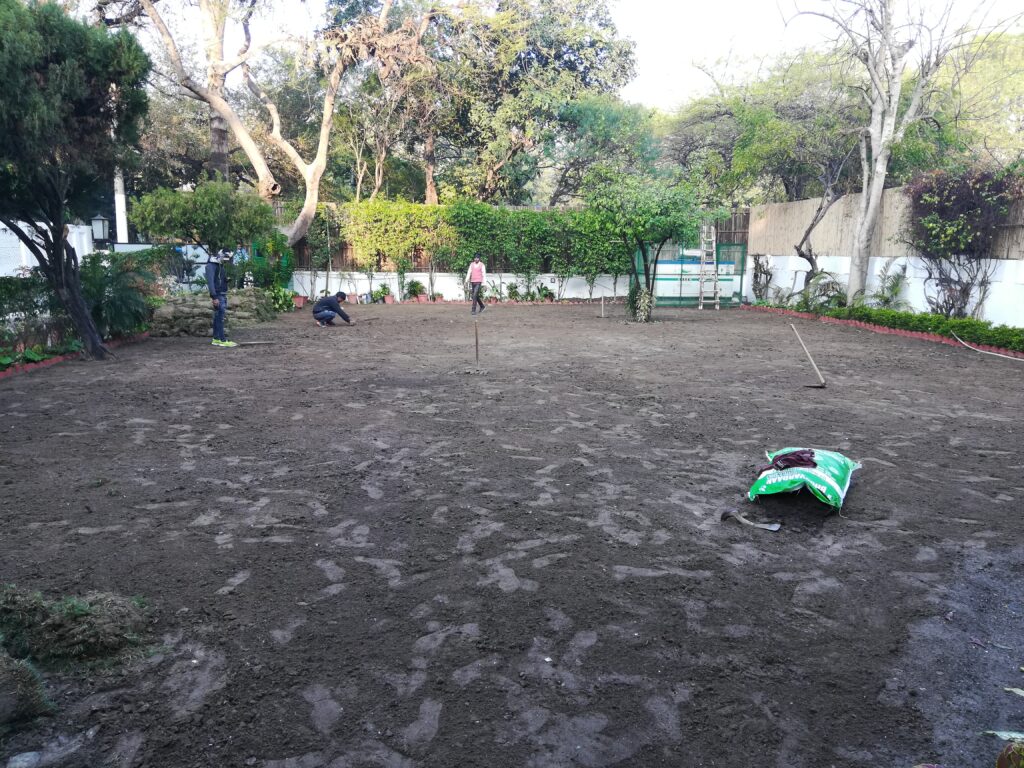 Whether you’re planting seeds or putting in turf, the preparation for your lawn will be the same. Begin by removing any stones, weeds, or debris from the lawn area. Once this area is removed, turn over the dirt by using a garden fork to dig and rotate. Next, use a rake to level the ground, then firm it down to remove any air pockets that may have formed. After waiting a few weeks for the soil to settle, you should rake one last time before spreading your seed or installing your grass. For more thorough information on both preparing and laying your grass, check out our Preparing Your Soil, Seeding Your Grass, and How to Lay Lawn Turf blog entries. Once your grass is planted, laid, and established, you may continue with your lawn management regimen.
Whether you’re planting seeds or putting in turf, the preparation for your lawn will be the same. Begin by removing any stones, weeds, or debris from the lawn area. Once this area is removed, turn over the dirt by using a garden fork to dig and rotate. Next, use a rake to level the ground, then firm it down to remove any air pockets that may have formed. After waiting a few weeks for the soil to settle, you should rake one last time before spreading your seed or installing your grass. For more thorough information on both preparing and laying your grass, check out our Preparing Your Soil, Seeding Your Grass, and How to Lay Lawn Turf blog entries. Once your grass is planted, laid, and established, you may continue with your lawn management regimen.
Step 4: Feed your lawn
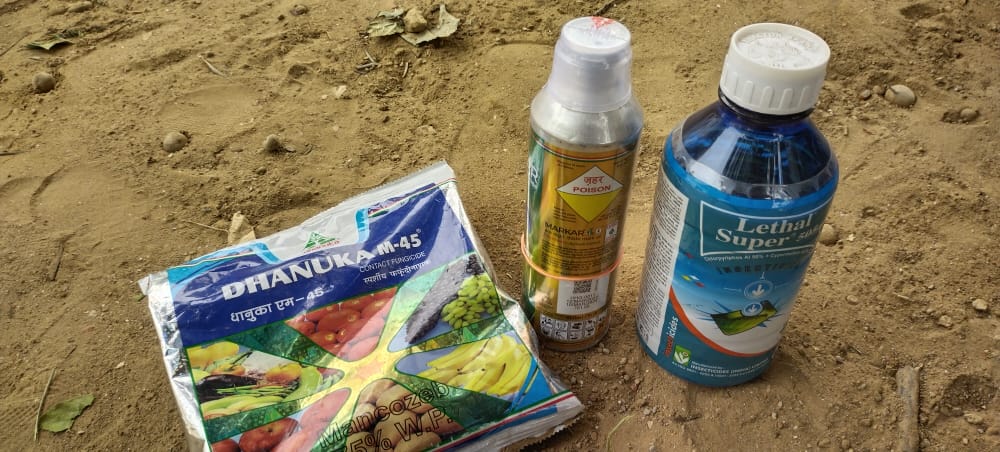 When it comes to feeding your grass, a seasonal strategy is preferable. Aim to feed your lawn with a professional lawn treatment every spring, summer, and fall for healthy grass all year round. Spring feeding should normally occur around April when the weather is just beginning to warm up and you’ve already trimmed the lawn a number of times. Judging by the weather, somewhat earlier or later feeding may be necessary. Summer feeding can also vary but is normally suggested for roughly 10 to 14 weeks following your spring feeding. Avoid summer feeding on any days when the weather is too dry; the ground will need a little moisture for the lawn feed to perform efficiently. Autumn feeding should occur around September. A specialist fall feed, such as the ICL Greenmaster fall grass feed, is great for ensuring your grass remains healthy until the following spring. As a general guideline all year round, you should apply fertilizer right after you have trimmed the lawn. This means your fertilizer has plenty of time to sink into your grass and isn’t disturbed by the following mowing.
When it comes to feeding your grass, a seasonal strategy is preferable. Aim to feed your lawn with a professional lawn treatment every spring, summer, and fall for healthy grass all year round. Spring feeding should normally occur around April when the weather is just beginning to warm up and you’ve already trimmed the lawn a number of times. Judging by the weather, somewhat earlier or later feeding may be necessary. Summer feeding can also vary but is normally suggested for roughly 10 to 14 weeks following your spring feeding. Avoid summer feeding on any days when the weather is too dry; the ground will need a little moisture for the lawn feed to perform efficiently. Autumn feeding should occur around September. A specialist fall feed, such as the ICL Greenmaster fall grass feed, is great for ensuring your grass remains healthy until the following spring. As a general guideline all year round, you should apply fertilizer right after you have trimmed the lawn. This means your fertilizer has plenty of time to sink into your grass and isn’t disturbed by the following mowing.
Step 5: Weed your lawn
Defined as invasive, undesirable plants, weeds not only seem unpleasant but inflict harm to your garden as they compete with existing grass for space and nutrients to thrive. With weeds, prevention is the best place to start. Regular care in the form of feeding, mowing, and aerating your garden can help maintain your lawn healthy, leaving you with robust grass and making it tougher for weeds to compete. However, no matter how hard you try, weeds will often sneak in. In these circumstances, always begin by looking at non-chemical means of eradication. If you can, manually eradicate the weeds by hand or with a garden fork. If this isn’t possible or you are dealing with a large quantity of weeds, you can begin looking at chemical solutions. Identify the weeds, and be sure to explore a range of weedkillers to discover the perfect one for your garden and circumstances.
Remember to: • Apply your weedkiller in spring and summer, when the grass (and any weeds) are growing the most.
• Do not apply any weedkiller within the first six months after sowing seeds or laying a turf; this might harm your new grass and hamper healthy development.
Step 6: Water your yard
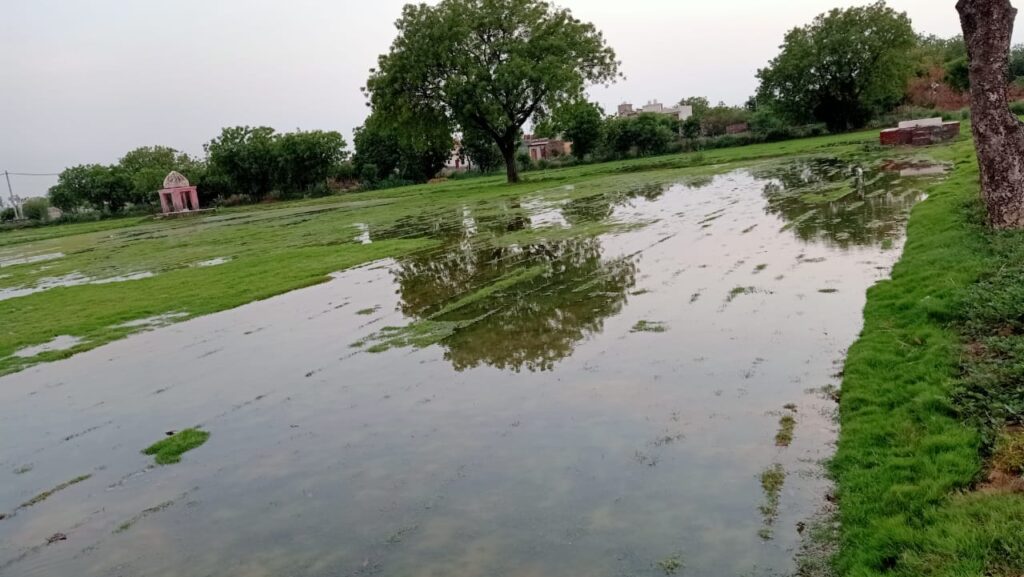 Watering your grass is not exactly a required need. Unlike many other plants, your grass will enter a dormant state if it reaches a particular degree of wetness and will then begin growing following rains. Because of this, it is advisable to either not water your lawn or water it on a regular basis; erratic watering can be stressful for your grass and thus more destructive than not watering at all. Regular watering is nonetheless great for keeping grass looking and feeling healthy all year round. Like with any lawn recommendation, it is necessary to analyze your individual lawn and the weather conditions; each garden is different. As a general reference, we would recommend attempting to water your grass roughly once a week, but this may decrease in rainy weather when your yard will be naturally hydrated. You should also always ensure your soil is let to partially dry before the next time you water it.The optimum time to water your grass is early in the morning. Watering before the sun has risen permits the water to properly infiltrate the soil before it begins to evaporate in the heat. Avoid watering in the evening; the water will cling to the grass leaves overnight, which can encourage bugs and mildew. The amount of water you will need may vary depending on your garden and circumstances. It is important to bear in mind that healthy roots normally lay roughly 6 inches into the ground surface; therefore, this is how much soil will need moistening for the best potential outcomes. While it is crucial to ensure your garden gets adequate water, it is equally important to ensure you don’t overwater your grass. Keep an eye on your soil; if water is flowing off the top, it has been overwatered and can no longer absorb extra water. Some hard soils, often found in modern home complexes, might contribute to this problem. If you are living in a region with hard soil, you will need to adjust your routine and water in phases. Try watering for 30 minutes, letting it soak, and then watering for another 30 minutes. Soil not absorbing water may also occur when your soil gets excessively compacted, leading us conveniently to our next step.
Watering your grass is not exactly a required need. Unlike many other plants, your grass will enter a dormant state if it reaches a particular degree of wetness and will then begin growing following rains. Because of this, it is advisable to either not water your lawn or water it on a regular basis; erratic watering can be stressful for your grass and thus more destructive than not watering at all. Regular watering is nonetheless great for keeping grass looking and feeling healthy all year round. Like with any lawn recommendation, it is necessary to analyze your individual lawn and the weather conditions; each garden is different. As a general reference, we would recommend attempting to water your grass roughly once a week, but this may decrease in rainy weather when your yard will be naturally hydrated. You should also always ensure your soil is let to partially dry before the next time you water it.The optimum time to water your grass is early in the morning. Watering before the sun has risen permits the water to properly infiltrate the soil before it begins to evaporate in the heat. Avoid watering in the evening; the water will cling to the grass leaves overnight, which can encourage bugs and mildew. The amount of water you will need may vary depending on your garden and circumstances. It is important to bear in mind that healthy roots normally lay roughly 6 inches into the ground surface; therefore, this is how much soil will need moistening for the best potential outcomes. While it is crucial to ensure your garden gets adequate water, it is equally important to ensure you don’t overwater your grass. Keep an eye on your soil; if water is flowing off the top, it has been overwatered and can no longer absorb extra water. Some hard soils, often found in modern home complexes, might contribute to this problem. If you are living in a region with hard soil, you will need to adjust your routine and water in phases. Try watering for 30 minutes, letting it soak, and then watering for another 30 minutes. Soil not absorbing water may also occur when your soil gets excessively compacted, leading us conveniently to our next step.
Step 7: Aerate your yard
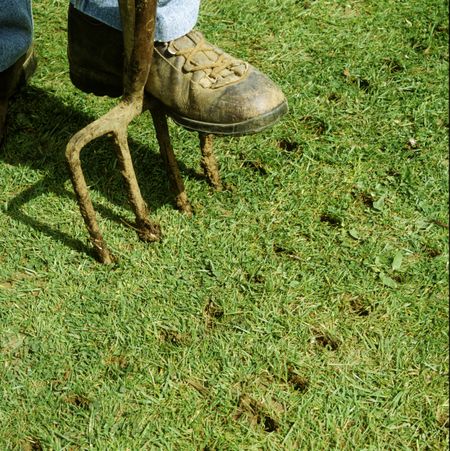 Soil that is overly compacted, whether due to heavy use or naturally hard soil, will not absorb water and may impede oxygen from reaching the seeds or roots of plants. In these cases, you will need to aerate your grass. Aerating includes using a garden fork to produce a limited number of holes in your soil. These holes will loosen up the soil and enable moisture, oxygen, and nutrients to permeate beyond the surface. Once you have aerated your grass, you will need to ensure your water is used more regularly, but use less water. This will allow moisture to reach the roots and soil without the risk of flooding.
Soil that is overly compacted, whether due to heavy use or naturally hard soil, will not absorb water and may impede oxygen from reaching the seeds or roots of plants. In these cases, you will need to aerate your grass. Aerating includes using a garden fork to produce a limited number of holes in your soil. These holes will loosen up the soil and enable moisture, oxygen, and nutrients to permeate beyond the surface. Once you have aerated your grass, you will need to ensure your water is used more regularly, but use less water. This will allow moisture to reach the roots and soil without the risk of flooding.
Step 8: Mow your lawn.
 Spring and summer are when your grass will be growing the most and at its strongest; hence, throughout these months, it will need the most attention. Growth will commence in the spring, and this is when your regular mowing regimen should start. You can Hire our Malli Services as well.
Spring and summer are when your grass will be growing the most and at its strongest; hence, throughout these months, it will need the most attention. Growth will commence in the spring, and this is when your regular mowing regimen should start. You can Hire our Malli Services as well.
In March, you may begin mowing dry grass with a high cut.
• In April, temperatures will increase, as will the rate at which your grass grows. In April, attempt to mow at least once every two weeks.
• In May and June, you should mow your grass often, but with a lower cut. Aim for once a week. • July and August tend to be drier months, so grass growth will actually slow down. In dry weather, you should mow every 1-2 weeks.
• Continue mowing every 1-2 weeks as needed until October. Towards the end of summer, you can raise the cut.
• November will likely be the final regular cut of the year; take this as a chance to additionally sweep up any fall leaves before winter.
• Over winter, you can mow as and when it is needed to remain on top of your lawn upkeep. Keep your mower on a high setting, and never trim your lawn in icy circumstances.
When mowing your lawn, always remember: • Do not remove over a third of the grass length in a single occurrence.
• Each run up your grass should slightly overlap the preceding one. This will guarantee that no place is overlooked.
• Work extra gently if the grass is moist or if your grass is exceptionally tall since it will be sensitive and much more vulnerable to harm .
Step 9: Protect your yard
No matter how strictly you follow our guidelines, there are always ways that a lawn can become damaged, be it from weather, heavy usage, or spot damage from animals. Dogs, and especially dog pee, are a prevalent concern when it comes to destroying grass. Dog pee is something that you cannot control, and it may really destroy the grass. There are a variety of ways you can help with concerns about dog urine.
These include:
- cleaning the area as quickly as possible. Keep an eye on your dog when you let him or her outside, and use a hose or pail of water to dilute the area and prevent grass burns.
- Spot-train your dog. This is an amazing technique to solve the problem, but you will, of course, rely on your dog and how simple they are to teach. If feasible, educating your dog to only use one specific area of your garden can make cleaning and keeping it so much simpler since you will know precisely where to clean and will only need to clean this little area.• Keep your lawn healthy. Regular care in the form of watering, weeding, mowing, and feeding will guarantee your grass is vigorous and in a far better position to protect itself against damage.
In winter, keep a consistent routine in your garden to ensure the least potential harm over the colder months.
- • Ensure waste, leaves, and debris are periodically cleaned from your landscape.
- • Control any weeds that develop.
- • Mow and water when required.
- • Aerate once a year (see Step 7).
- • Be mindful not to misuse your lawn in unfavorable situations, such as frost.
Step 10: Repair or reseed your grass.
While unwatered or dormant grass may recover itself, dead grass can’t. This means any discolored or barren spots on your lawn will need to be replanted. To reseed a lawn, begin by fully removing any dead grass with a gardening fork or rake. Once the old grass is gone from the area, you should turn, rake, and aerate the soil below. Then, apply your lawn seed and level the ground lightly. Water the area often with a tiny amount of water throughout the following couple of weeks. To re-turf your lawn, begin by chopping out the present turf using a shovel. Rake the dirt below, then measure out and fill in the space with your new turf. Depending on the weather, you will need to water your new turf every 5 to 10 days to ensure it develops properly in the ground. To keep your lawn looking healthy all year round, be sure to explore the comprehensive lawn care collection at Balaji Nursery. From grass seed to a range of weedkillers and lawn treatments, you can discover everything Natural Lawn Grass you could possibly need to produce the ideal lawn.
I recommend checking out:
10 Stress Relieving Indoor plants for home 5 Lucky Plants to Invite Health and Prosperity 5 Medicinal Plants to Grow at Home
Last Updated on 1 week ago by Anjali Mehra Ph.D. in Horticulture (Punjab Agricultural University)
- Why Lawn Grass Fails After Installation (Real Indian Case Studies) - December 25, 2025
- Nilgiri Grass vs Korean Grass – Price, Look & Maintenance Compared - December 23, 2025
- Delhi Pollution & Dust-Proof Lawn Care Guide - December 20, 2025
